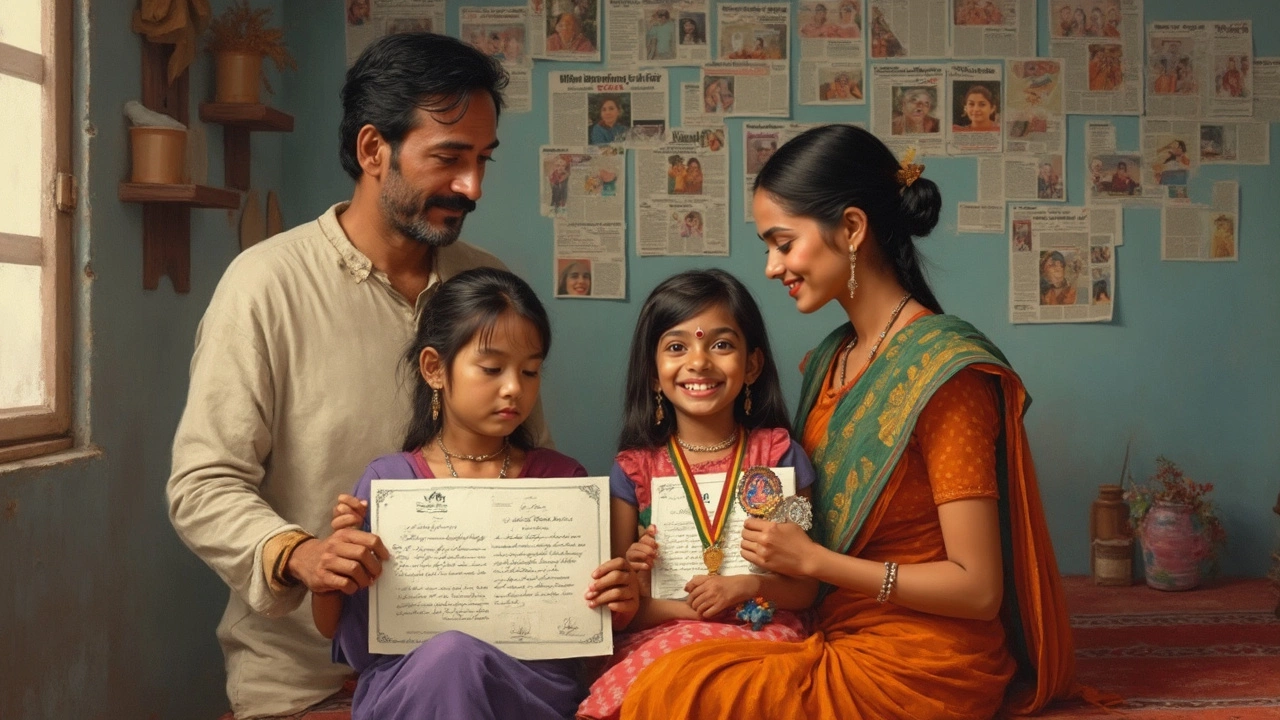The Girl Child Policy in India is more than just a set of words on paper. It's a lifeline for millions of young girls, aiming to uplift them in a society where they often face significant challenges. At the core, these policies strive for gender equality, addressing the deep-rooted prejudices many girls face from birth.
So, what exactly do these policies involve? Primarily, they include a variety of government schemes that focus on education, health, and financial security. Think about programs that waive school fees for girls, scholarships to keep them in classrooms, and healthcare projects to ensure they grow up healthy. The idea is, if we can give girls a fair shot early on, they’re more likely to thrive as adults.
- Introduction to Girl Child Policy
- Key Government Schemes
- Impact on Education and Health
- Challenges and Future Prospects
Introduction to Girl Child Policy
In India, the Girl Child Policy is more than just a toolbox for gender equality. It's a necessity born out of systemic gender bias where young girls often faced neglect compared to their male siblings. Recognizing this, the Indian government has launched several initiatives aiming to break the cycle of discrimination and neglect.
One major aspect is education. You might be surprised to know that even today, girl children drop out of school due to various socio-economic factors. The Girl Child Policy includes schemes such as 'Beti Bachao, Beti Padhao', which means 'Save the Daughter, Educate the Daughter'. This program not only encourages families to send their daughters to school but also financially supports states that work towards improving the sex ratio and female literacy.
Equally important is health. Programs ensure girls have access to nutrition and medical facilities from a young age. The Integrated Child Development Services (ICDS) and the Janani Suraksha Yojana are examples that emphasize providing healthcare to mothers and newborns, aiming specifically to reduce infant mortality, which dishearteningly affects more girls than boys.
There's also a push for financial empowerment. The 'Sukanya Samriddhi Yojana', for instance, is a savings scheme designed specifically for girls. It offers a higher interest rate than regular savings accounts, encouraging parents to save for their daughter's future expenses, like education and marriage.
These efforts are not just for show; they aim to tackle real issues by involving communities and governments. Through awareness campaigns, social interventions, and financial incentives, the Girl Child Policy is slowly but surely closing the gap between male and female children in society.
Key Government Schemes
The Indian government has introduced several schemes to support the Girl Child Policy. These schemes have specific goals, like boosting education, providing financial aid, and improving healthcare. Let's look at some key initiatives that stand out:
Beti Bachao Beti Padhao
This is one of the flagship programs aimed at saving and educating the girl child. Launched in 2015, it targets issues like declining child sex ratios and promotes gender equality through awareness campaigns. The program focuses heavily on ensuring girls have access to quality education and equitable opportunities.
Sukanya Samriddhi Yojana
Think of this as a savings account, but specially for girls. Parents can open an account in their daughter's name, usually before she turns 10, and it offers a high-interest rate. The aim is to encourage savings to cover future education and marriage expenses, making sure families have a robust financial plan for their daughters.
Kasturba Gandhi Balika Vidyalaya
This scheme is all about education, offering free residential schooling for girls in underprivileged and backward areas. By providing access to education in remote regions, the scheme ensures that no girl is left behind simply because she lives far from a school.
Balika Samridhi Yojana
Launched to provide financial support to low-income families for raising girl children, this scheme involves financial assistance at the birth of a girl child and continuous scholarships during her schooling years. This way, the scheme tackles both immediate and long-term educational expenses.
These are just a few examples of how policies are transforming aspirations into realities for many young girls in India. Each scheme is crafted with the vision that a well-supported, educated girl today can shape a better tomorrow.

Impact on Education and Health
When we talk about the Girl Child Policy in India, a big part of that discussion revolves around its impact on education and health. These aren't just buzzwords—education and health are game-changers for a girl's future. The government knows this, and that's why several initiatives have been rolled out to make sure girls get the best shot at both.
Education: Breaking Barriers
India's government initiatives like the Beti Bachao Beti Padhao (BBBP) have been pivotal. This scheme isn't just about ensuring girls stay in school; it’s designed to keep them thriving there. Under BBBP, there are financial incentives for families to enroll their daughters in school and keep them there until they graduate. A study found that school enrolment for girls has seen a noticeable uptick since the program started.
Financial support isn't the only card on the table. Programs also focus on free textbooks, uniforms, and bicycles for girls in rural areas. These sound like simple things, but they have really cut down on dropout rates.
“Education is the most powerful weapon which you can use to change the world,” said by Nelson Mandela, perfectly sums up why investing in girls' education is so crucial.
Health: Building a Strong Foundation
Now, let's look at health. Ensuring girls are physically and mentally healthy is just as important as educating them. The government’s schemes like the Janani Suraksha Yojana and Rashtriya Kishor Swasthya Karyakram are tailored to protect the health of girls from birth through adolescence.
The Janani Suraksha Yojana, for instance, focuses on safe motherhood, reducing maternal and infant mortality. Then, as girls hit their teens, programs like the Rashtriya Kishor Swasthya Karyakram cover mental health, nutrition, and reproductive health education. Access to vaccines and regular healthcare checkups are now more accessible in remote areas, thanks to mobile health clinics and dedicated health workers.
Collectively, these policies create an environment where girls can grow into healthy women, capable of leading fulfilling, independent lives.
| Impact Area | Initiative | Result |
|---|---|---|
| Education | Beti Bachao Beti Padhao | Increased enrolment rates |
| Health | Janani Suraksha Yojana | Reduced maternal and infant mortality |
Challenges and Future Prospects
Tackling issues surrounding the Girl Child Policy in India isn't a walk in the park. There are quite a few hurdles to overcome to make these initiatives truly effective.
Existing Challenges
Firstly, cultural norms and traditions can be major stumbling blocks. In many communities, the preference for sons over daughters persists, and these deep-rooted attitudes can't be changed overnight. Plus, awareness about government schemes often doesn't reach those who need it most—rural households with limited access to information.
Moreover, logistical challenges, such as inadequate infrastructure and lack of trained personnel, particularly in education and health sectors, make it tough to deliver the benefits of the Girl Child Policy. Not to mention, budget constraints often limit the scope and reach of these valuable programs.
The Road Ahead
So, what can be done to improve the situation? For starters, raising awareness is crucial. Using grassroots advocacy campaigns, community workers, and digital platforms can spread the word about the available schemes.
There's also a need to reinforce education systems to be more inclusive and adaptable to girls' needs. Enhancing public-private partnerships may help stretch limited resources further, creating a more robust support framework.
Finally, tracking and evaluating the impact of these government schemes through data collection and policy analysis will be important to drive continuous improvement.
To wrap it up, while challenges exist, there's a clear path forward. By building on these strengths and addressing the weaknesses head-on, female empowerment can take a giant leap in the right direction across India.

